Pieter Hugo at the CCB
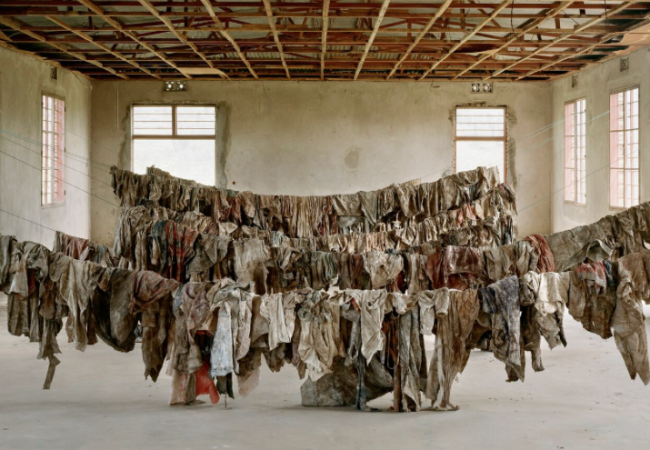
Pieter Hugo's photographs depict a world "Between the Devil and the Deep Blue Sea". To see at the new temporary exhibit on CCB.
This is a unique exhibition, which forces us to remember that the world is much wider than our backyard, and not everybody has a great life
The exhibition "Between the Devil and the Deep Blue Sea – Entre a Espada e a Palavra", asks what divides and unites us? How do people live under the shadows of cultural repression or political dominance?
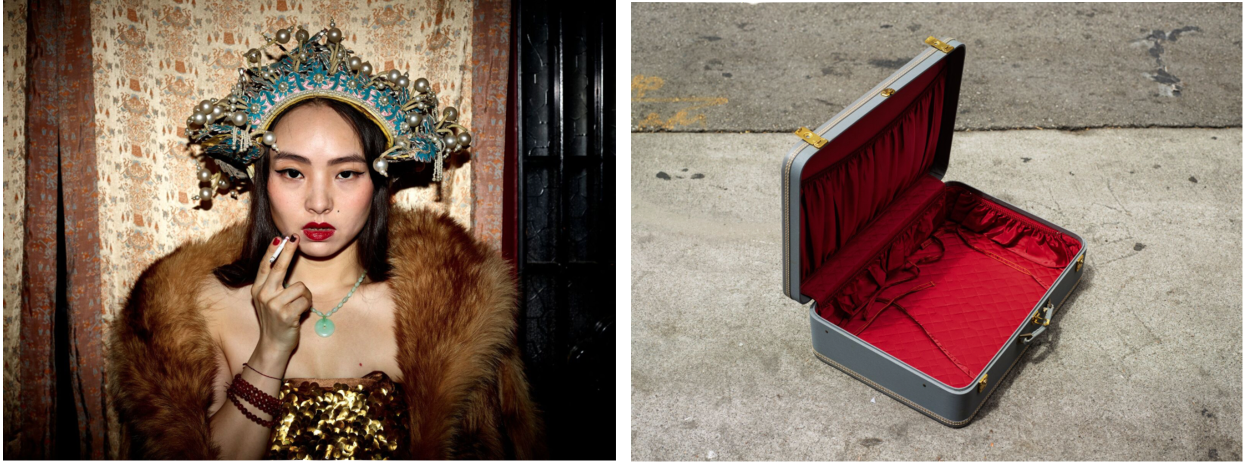
Left, from "Flat Noodle Soup Talk", Zeng Mai Hui Zi in Beijing, 2015-2016,c-print, and to the right, from the series "California Wildflowers", Untitled, San Francisco. In the opening photo, from the "Rwanda" series, from 2014, clothing removed from genocide victims at Murambi Technical School, where approximately 50,000 people were murdered by Hutu militias in classrooms. C-print.
The South African photographer Pieter Hugo essays the answers through his objective and brings us fifteen photographic series produced between 2003 and 2016. These works have been shown before at Kunstmuseum Wolfsburg and at Museum für Kunst und Kulturgeschichte, in Dortmund.
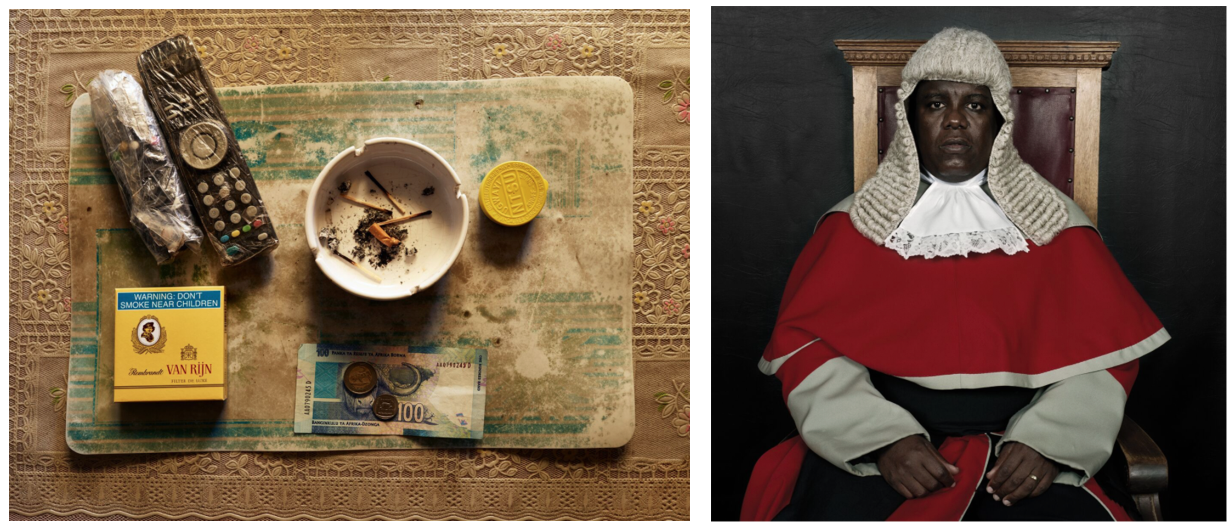
On the left, from "Kin" series, In Sipho Ntsibande's home, Soweto, 2013, c-print, ex.1/9 + 2 P.A., ant to the right, from "Judges of Botswana" series, The Honourable Justice Moatlhodi Marumo, 2005, lambda print.
Portraits, still lifes and landscapes in which Hugo shows an intense observation sensitivity of social dissonances can be seen in this exhibition. With his camera, he tells us about all social classes in an insightful way, and not only in his homeland, South Africa but also in other places, such as Rwanda, Nigeria, Ghana, the United States and China, all places where these dissonances are more evident.
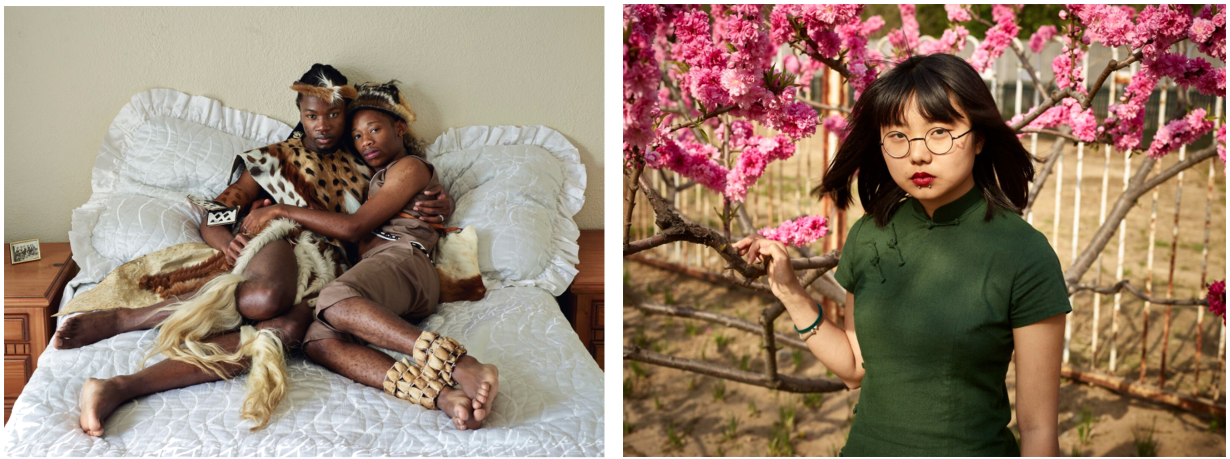
On the left, from "Kin" series, Thoba Calvin and Tshepo Cameron Sithole-Modisane, Pretoria, 2013, c-print. On the right, from "Flat Noodle Soup Talk" series, Deersan, Beijing, 2015-2016, c-print.
The artist shows a special interest in social subcultures, the idealized gap between the romanticised and the real. His photos feature homeless people, albinos, people suffering from AIDS, hyena tamers, scrap collectors in post-apocalyptic settings, Nollywood actors in striking costume and pose, as well as his family and friends.
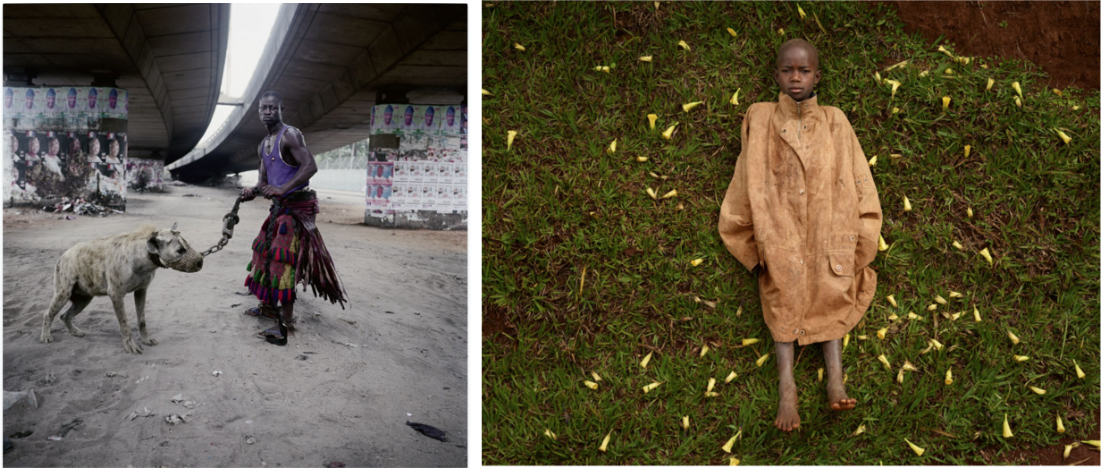
On the left, from "The Hyena & Other Men", Abdullahi Mohammed with Mainasara Ogere-Remo, Nigeria, 2007, c-print. On the right, Portrait #1. Ruanda, 2014, c-print.
His photos have no hierarchy, all are treated with equal respect. Being more of an artist than an anthropologist or a reporter, Hugo captures the "moment of voluntary vulnerability," with a concise and pronounced visual language, although simultaneously empathic, thus creating portraits of a powerful weakness.
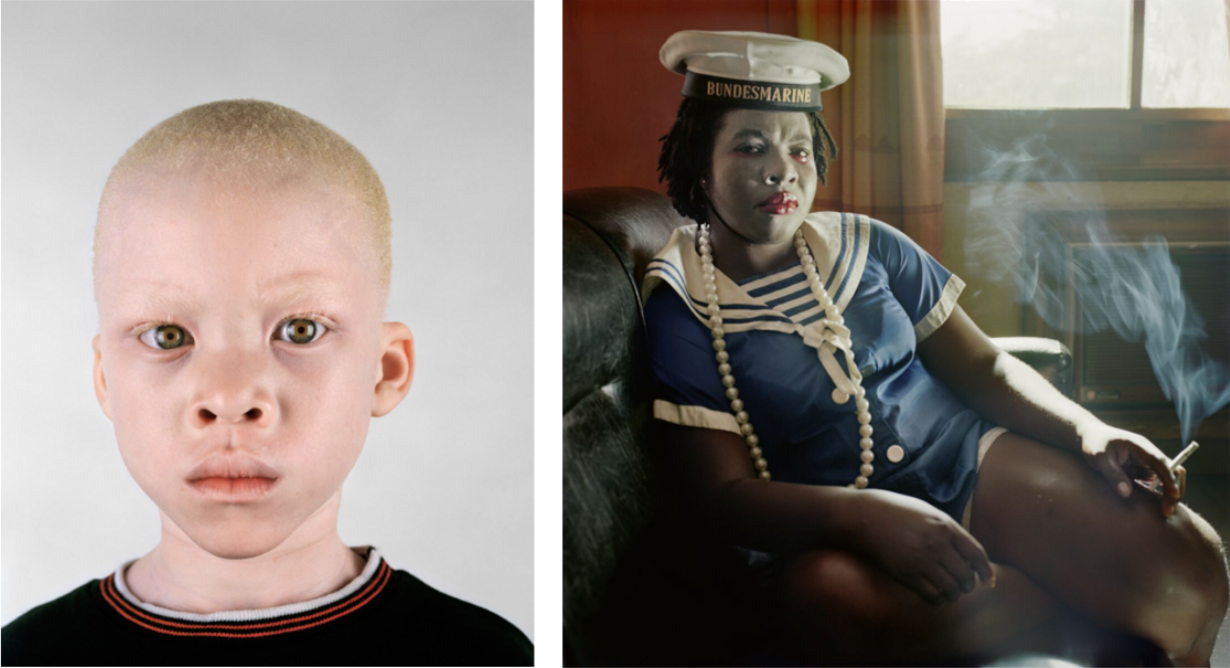
On the left, Steven Mohapi. Johannesburg, 2003, archival pigment ink on cotton rag paper, and on the right, from "Nollywood" series, Obechukwu Nwoye, Enugu, Nigeria, 2008, c-print.
In many cases, this humanity contrasts sharply with the social reality trials, in which the portrayed are involved. It is in this sense that the still-lifes and landscapes of Pieter Hugo occasionally present themselves as social commentaries or metaphors, complementing his sociocultural portraits.
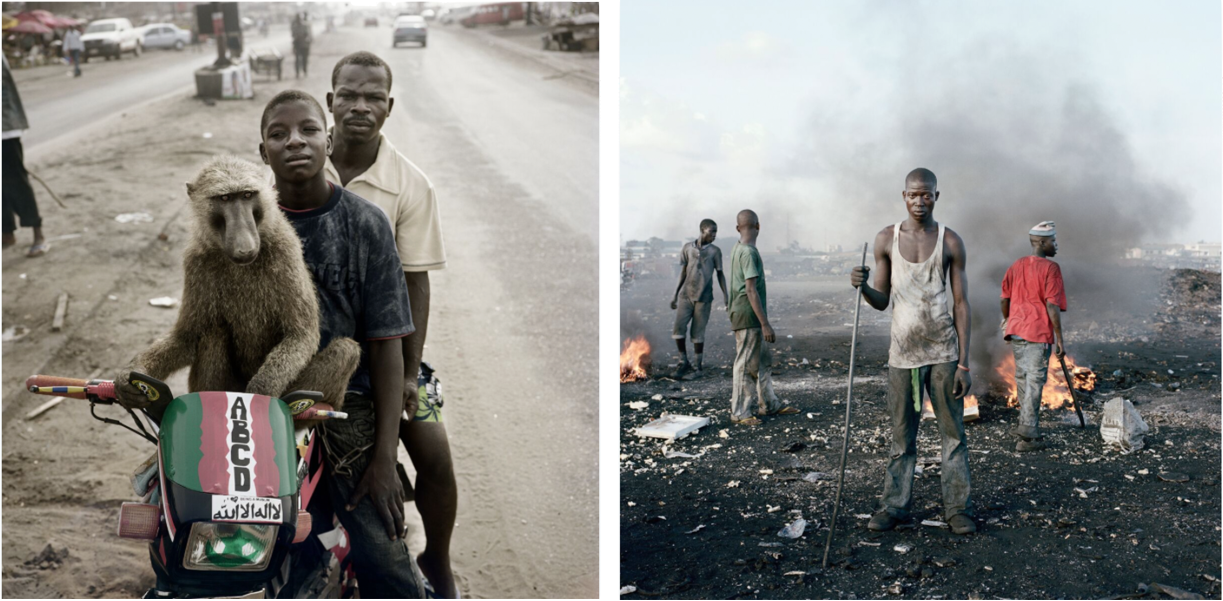
On the left, from "The Hyena & Other Men" series, Emeka, motorcyclist and Abdullahi Ahmadu Asaba, Nigeria, 2007. On the right, from "Permanent Error" series, David Akore, Agbogbloshie Market, Accra, Ghana, 2010, c-print.
Each photographic series is accompanied by a descriptive memo, written in the first person, on the motives and the choice of scenarios that serve as a touchstone, to the series in question. To further heighten your interest in this show by Pieter Hugo, we have selected some of the artist's intimate testimonials on each series.
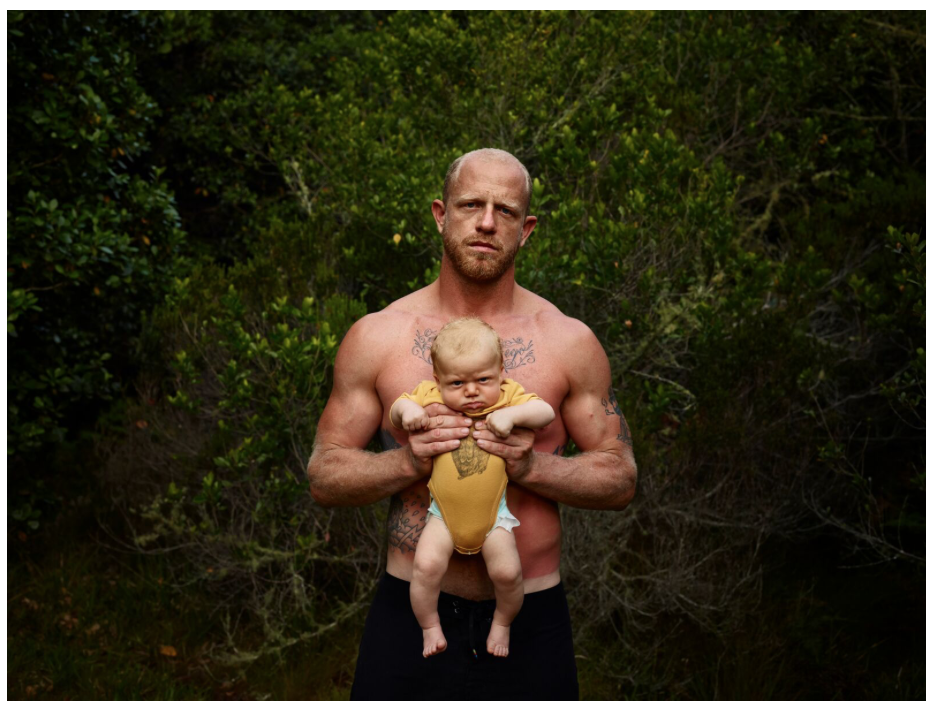
Artist's self-portrait with his son, from "Kin" series, at Green Point Common, Cape Town, 2013, c-print.
About the series "Rwanda and South Africa", 2014-2016
"1994 was also the year of the Rwanda genocide, an event which shook me deeply. Ten years later, I was to photograph its aftermath extensively and puzzle its legacy ... Apparently free from the past in Rwanda and South Africa, their (children's) relationship with the world let me reassured to myself. But at the same time, I am aware of the impressionable nature of their minds."
About the "Permanent Error" series, Ghana, 2009-2010
"This photo essay was conducted in a densely populated earth triangle in Accra, Ghana's capital. Agbogbloshie is the second largest electronic waste processing zone in West Africa. (...) Sent under the pretext of being reusable, unsold electronic goods are dumped at Agbogbloshie - an area dubbed "Sodom and Gomorrah" by locals.
This is where the circuits, transistors, capacitors, and semiconductors are reduced to their base metals. It must be admitted that there is something magnificently alchemical about what happens there: these devices that are the pinnacle of cultural feats are transformed back into their base elements. (...) I think it is appropriate to say that Agbogbloshie is a dirty and shadowy monument to the digital age. (...) In an environment like this, where geopolitical imbalances are exploited to effectively dispose of scrap in poor countries, it is difficult not to make a political decision. "
About the "Conversations Around a Pasta Soup" series, China, 2015-2016
"These images were photographed in Beijing over a month of residence. (...) The project includes a variety of still lifes. There is something melancholy about them, partly because they suggest the Dutch seventeenth-century genre of vanitas painting. "
About the "Family Ties" series, South Africa, 2006-2013
"South Africa is a troubled, wounded, schizophrenic and fragmented place. It is a very violent society, in which the scars of colonialism and apartheid are still marked. (...) How do you live in such a society? How do you take responsibility for history, and how much should you try to do it? "
About the "Nollywood" series, Nigeria, 2008-2009
While working on the series The Tamers of Hyenas and Others, I became aware of the unique Nigerian film industry, ... the third largest in the world, after the United States and India. It was not so much the economic aspect, related to the release of between five and a thousand films a year that interested me. I was especially interested in the cultural issues codified in those productions, conducted by local producers and aimed at local audiences. "
"Between the Devil and the Deep Blue Sea" by Pieter Hugo
From July 5 to October 7
Berardo Collection Museum
Praça do Império 1449-003 Lisbon
Stay in touch!
Want to learn more about Lisbon and the best places in town? Subscribe our monthly newsletter and we will keep you informed!
Hillary Hoffower in Lisbon
The Business Insider journalist, Hillary...
The Albatroz Hotel has re-opened
The Albatroz Hotel, the first luxury villa for...
World Travel Awards elects Portugal as the best European Destination
Portugal was elected Europe’s best travel...


